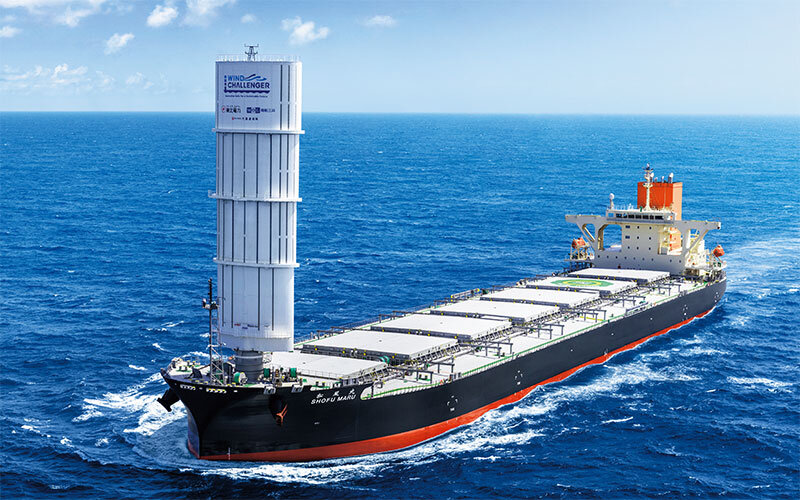Mitsui O.S.K. Lines, Ltd. (MOL) and MOL Drybulk Ltd. announced plans to install wind propulsion systems, including Wind Challenger, on seven new bulk carriers and multi-purpose vessels. The Wind Challenger has shown up to 17% daily fuel reduction on the Shofu Maru.
 Photo: The Shofu Maru, the first vessel equipped with the Wind Challenger, a hard sail system (delivered in October 2022)
Photo: The Shofu Maru, the first vessel equipped with the Wind Challenger, a hard sail system (delivered in October 2022)
MOL aims to have nine Wind Challenger-equipped vessels, totaling eleven vessels with wind propulsion systems. Contracts are signed for three bulk carriers with Oshima Shipbuilding, with plans for three more.
Additionally, MOL Drybulk will install two Ventfoils on a new multipurpose vessel by 2025. MOL’s "Environmental Vision 2.2" targets net zero GHG emissions by 2050, planning 25 Wind Challenger vessels by 2030 and 80 by 2035.
MOL aims to reduce GHG emissions and decarbonize society with its eco-friendly fleet.
| Ship type | No. of vessels |
Wind-assisted propulsion system to be installed |
GHG reduction rate (annual average) |
Status | Scheduled delivery |
|---|---|---|---|---|---|
| Bulk carrier | 3 | 1 Wind Challenger per vessel (+ installation of multiple rotor sails is under consideration) |
About 7%-16%/vessel depending on route, conditions, etc. (about 15%-28% when 3 rotor sails are used together) |
April 5, 2024 Construction contract has been signed |
2nd half of 2026 - 1st half of 2027 |
| Bulk carrier | 3 | 1 Wind Challenger per vessel | About 7%-16%/vessel depending on routes, conditions, etc. | Construction contract negotiations underway | 2027 - 2028 |
| Multi-purpose vessel | 1 | 2 Ventfoils per vessel | About 2% per vessel | October 2024 Charter contract to be signed |
January 2025 |